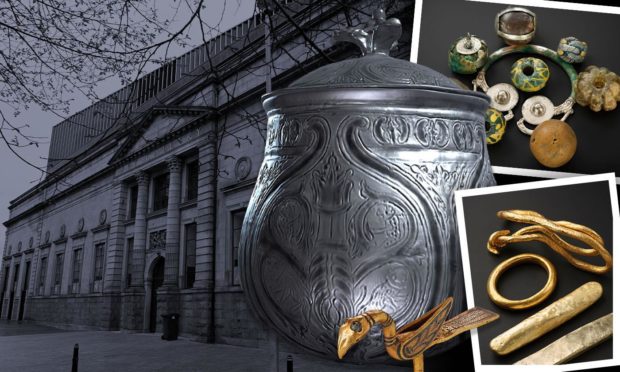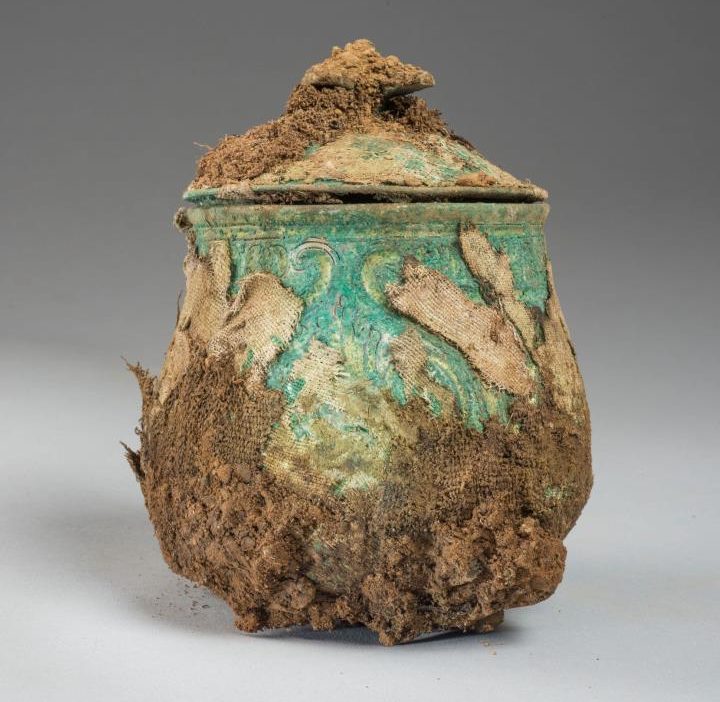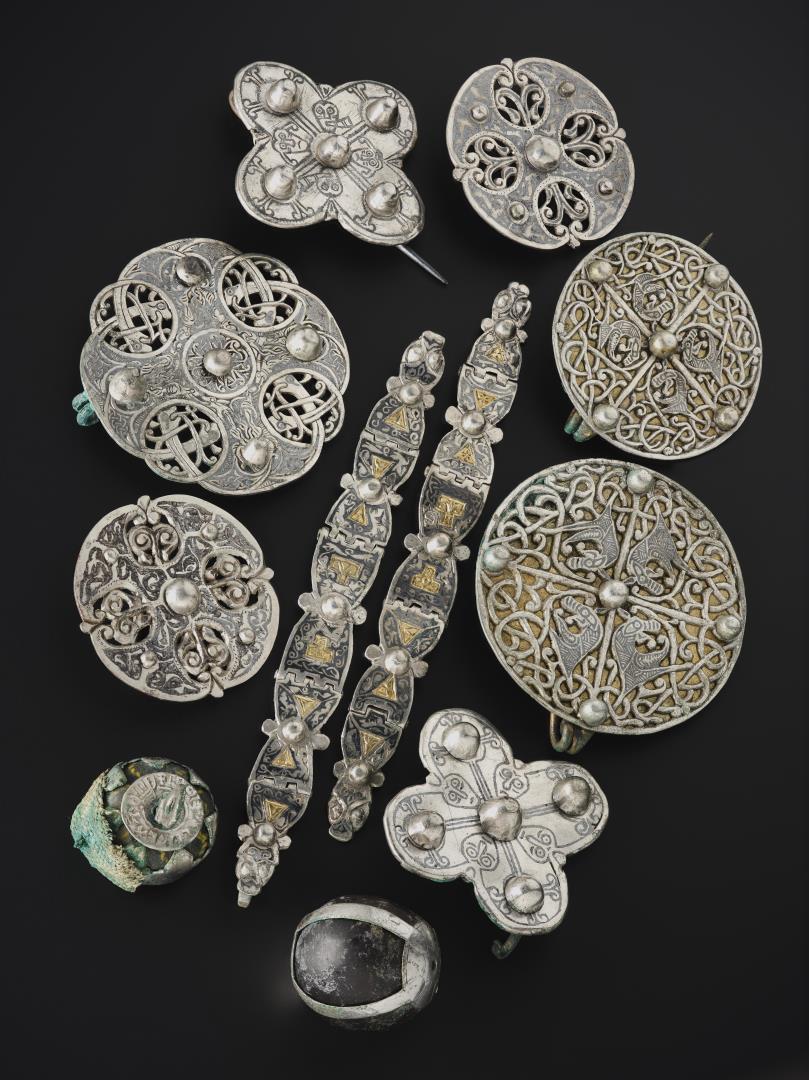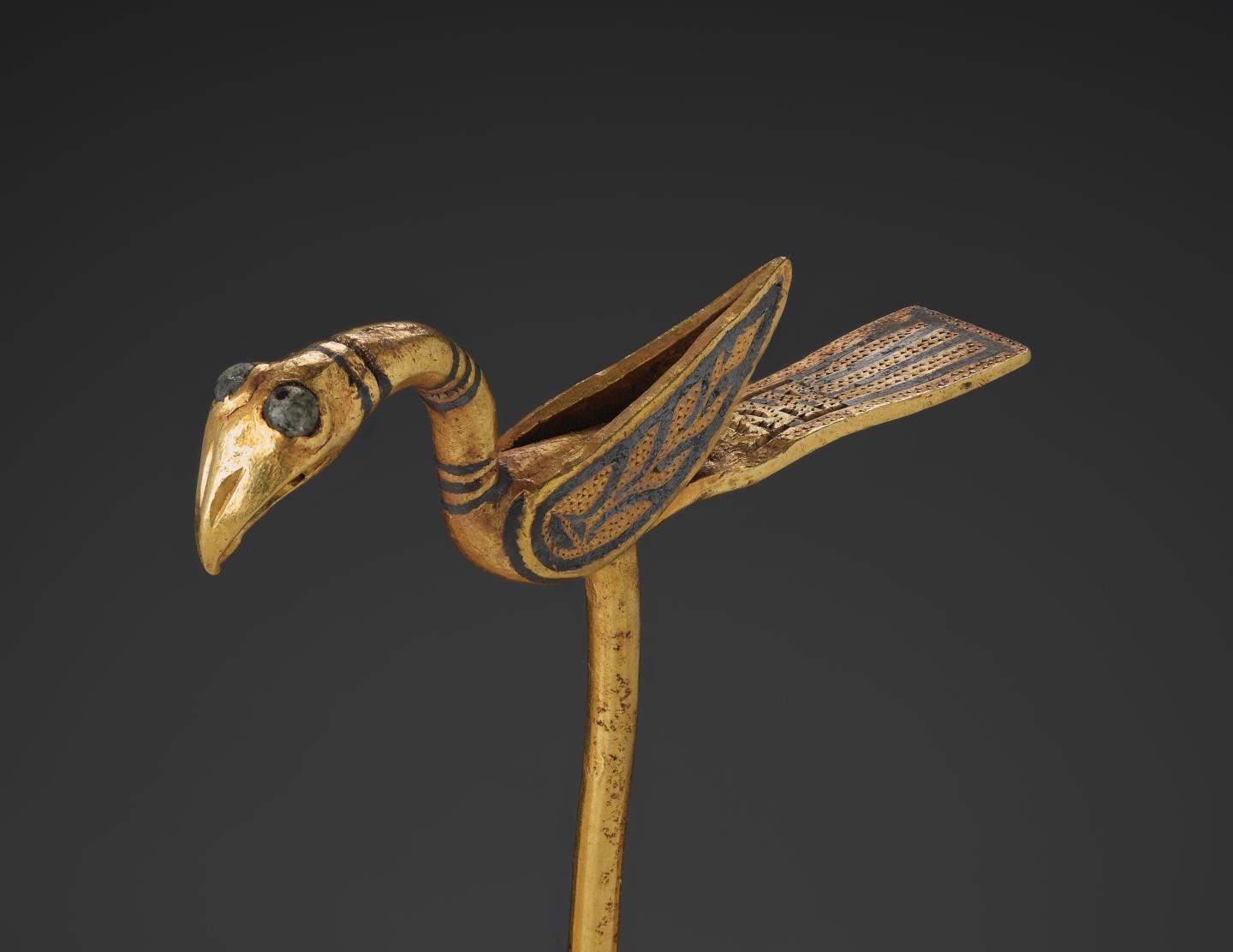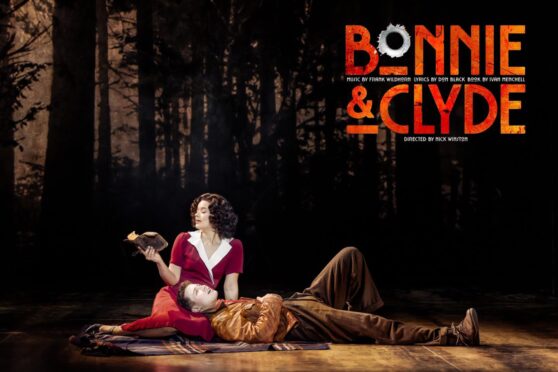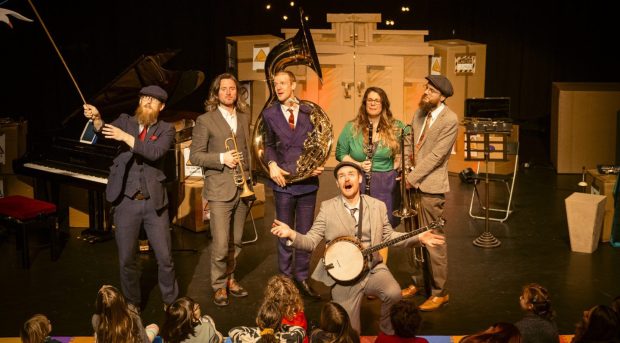One of the most important UK archaeological finds of the century – The Galloway Hoard – will go on display at Aberdeen Art Gallery.
The new exhibition, Galloway Hoard: Viking-age Treasure, offers the first chance to see details – hidden by the dirt and corrosion of more than a thousand years – revealed by expert conservation, painstaking cleaning and cutting-edge research.
Currently on display at the National Museum of Scotland in Edinburgh, north-east history-lovers will be able to see the exhibition at Aberdeen Art Gallery from July 30 2022 to October 23 2022.
The hoard is the richest collection of rare and unique Viking-age objects ever found in Britain or Ireland. Buried around 900AD, it brings together a stunning variety of objects and materials in one discovery.
In addition to the cleaned, conserved objects on display, AV and graphics will provide behind-the-scenes insight into the archaeological and scientific details.
Using modern technology to uncover Viking treasures
A major revelation is a new detail of the unique lidded vessel which contained the Galloway Hoard’s precious treasures. The vessel itself is wrapped in textiles which both cover the object and make it too fragile to display.
However, new 3D models, taken from X-ray imaging done at the British Museum and produced with the help of the Glasgow School of Art and Steven Dey of Thinksee3D Ltd, have enabled researchers to see beneath the textiles for a glimpse of the decorated surface of the vessel, revealing new details about its age and origin.
Dr Martin Goldberg, principal curator, medieval archaeology & history at National Museums Scotland said: “This is only the third silver-gilt and decorated vessel to be found as part of a Viking-age hoard in the UK, and so we might have expected it to be like the other two.
“However, the 3D-model reveals that the vessel is not from the Carolingian (Holy Roman) Empire of continental Europe as we’d expected based on other similar examples.
“Instead, the decoration and design show leopards, tigers and Zoroastrian religious symbols, all of which suggest that it is a piece of Central Asian metalwork from halfway round the known world.”
Where is the Galloway Hoard vessel from?
Another surprise came from radiocarbon dating of wool wrapping the vessel, which dates to AD 680-780.
Dr Martin Goldberg added: “So, the vessel is from beyond Europe, potentially thousands of miles away, and the wool wrapping it pre-dates the Viking Age, being more than 100 or maybe even 200 years old by the time it was buried.
“While the real vessel is still wrapped up in 1,300-year-old cloth being kept safely in controlled environmental stores for preservation and future research, it’s wonderful to be able to use 21st-century technology in the exhibition to let people see what it looks like under those fragile textile wrappings.”
Dr Martin Goldberg said that it’s the “unique combination of familiar objects, exotic materials and exceptional preservation” that make the Galloway Hoard a fascinating find.
Retired businessman and Derek McLennan discovered the treasure in 2014 when he was scanning an area of church land in Dumfries and Galloway with two local ministers.
Research continues into the Galloway Hoard. The Arts and Humanities Research Council has awarded support for a £1m, three-year research project, Unwrapping the Galloway Hoard, led by National Museums Scotland in partnership with the University of Glasgow which will commence later this month.
